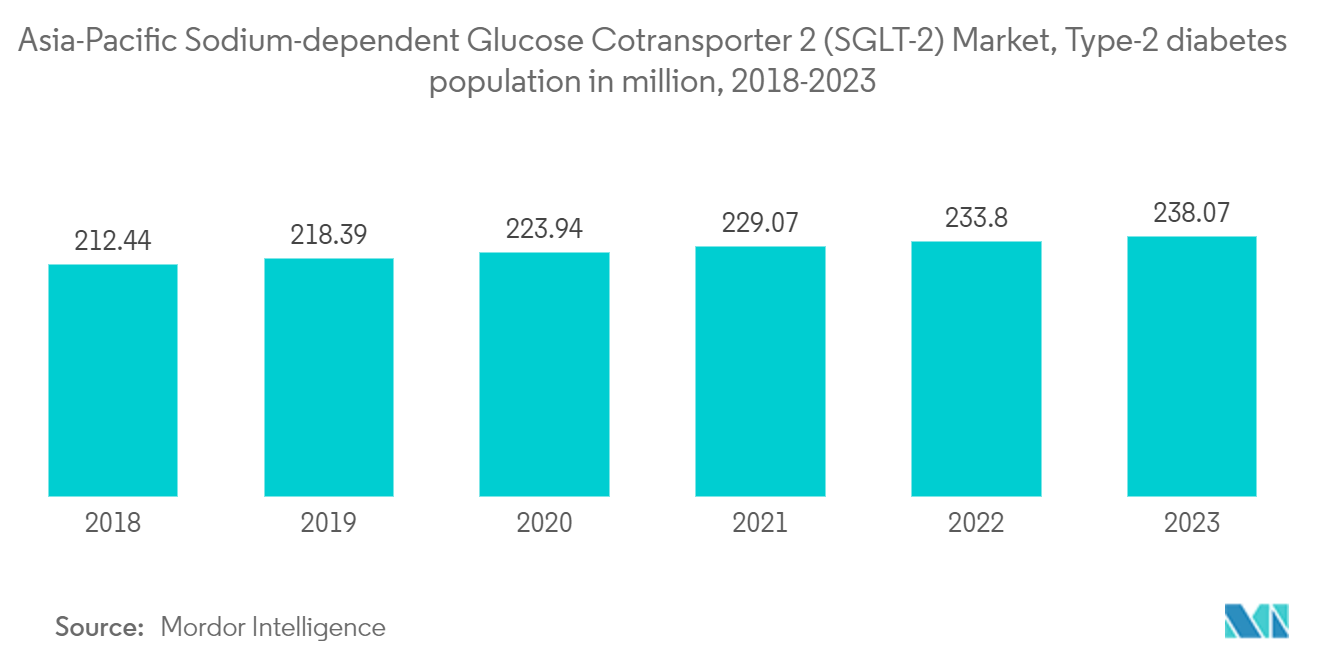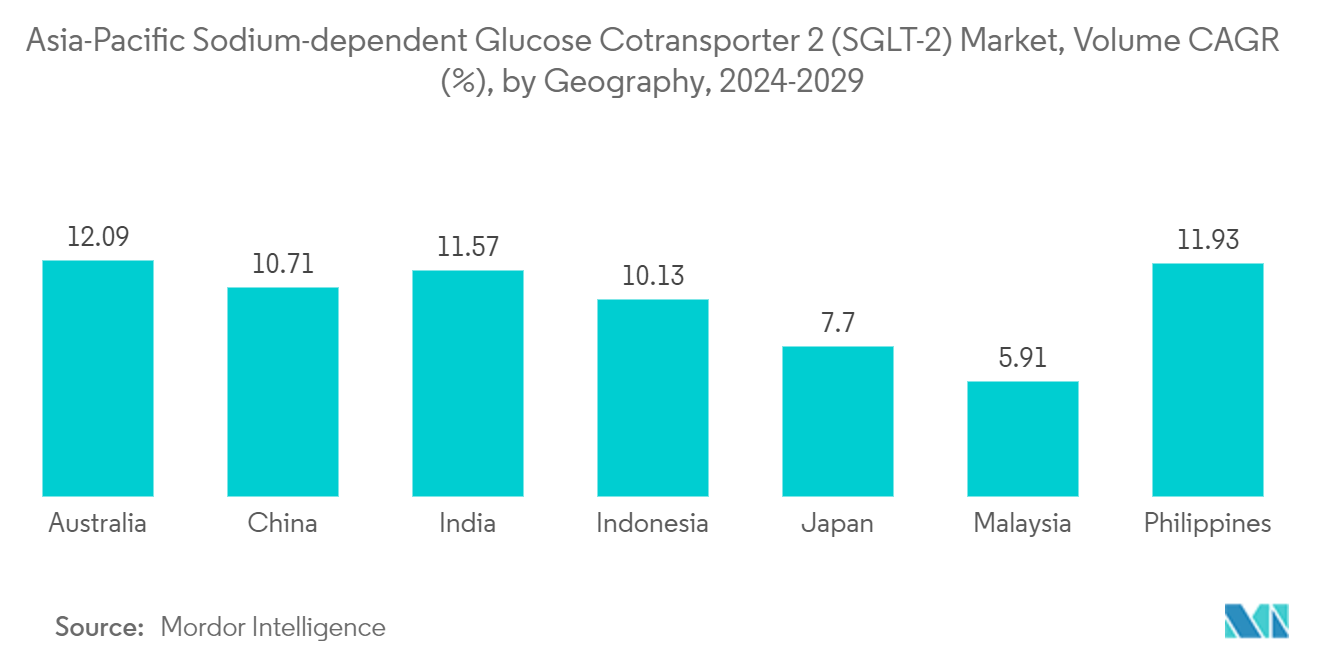Market Trends of Asia-Pacific Sodium-dependent Glucose Cotransporter 2 (SGLT-2) Industry
Jardiance Segment holds the highest market share in the Asia-Pacific Sodium-dependent Glucose Cotransporter 2 (SGLT-2) Market in the current year
Jardiance holds the highest market share of about 43.3% in the Asia-Pacific Sodium-dependent Glucose Cotransporter 2 (SGLT-2) Market in the current year.
Jardiance is a prescription medicine to lower blood sugar, diet, and exercise in adults with type 2 diabetes. It reduces the risk of cardiovascular death in adults with type 2 diabetes, including cardiovascular disease. Jardiance also reduces the risk of cardiovascular death and hospitalization for heart failure in adults when the heart cannot pump enough blood to the rest of the body. It is not for people with type 1 diabetes.
SGLT-2 inhibitor drugs are available internationally and are recommended for use when escalation of treatment for type 2 diabetes is required, along with lifestyle management. Oral agents are typically the first medications used in treating type 2 diabetes due to their wide range of efficacy, safety, and mechanisms of action. SGLT-2 inhibitor drugs help diabetes patients control their condition and lower the risk of diabetes complications. People with diabetes may need to take antidiabetic drugs for their whole lives to control their blood glucose levels and avoid hypoglycemia and hyperglycemia. These agents present the advantages of easier management and lower cost. So they became an attractive alternative to insulin with better acceptance, which enhances adherence to the treatment.

Japan is expected to dominate Asia-Pacific Sodium-dependent Glucose Cotransporter 2 (SGLT-2) Market over the forecast period
Japan holds the highest market share in the Asia-Pacific Sodium-dependent Glucose Cotransporter 2 (SGLT-2) Market in the current year and is expected to grow with a CAGR of about 8% over the forecast period.
Japan includes around 11 million people with diabetes, according to IDF data. While Type 1 diabetes is caused by an immune system malfunction, Type 2 diabetes is linked to leading a sedentary lifestyle, resulting in inherent resistance to insulin. Japan contains one of the largest elderly populations in the world, which is more susceptible to the onset of type 2 diabetes. As Japan's population continues to age, the prevalence of diabetes also increases. The rise in the number of people with type 2 is driven by a complex interplay of socio-economic, demographic, environmental, and genetic factors. Key contributors include urbanization, an aging population, decreasing levels of physical activity, and increased levels of overweight and obesity.
Much can be done to reduce the impact of diabetes. Evidence suggests that type 2 diabetes can often be prevented. In contrast, early diagnosis and access to appropriate care for all types of diabetes can avoid or delay complications in people with the condition. When diabetes is undetected or inadequately treated, people with diabetes are at risk of serious and life-threatening complications, such as heart attack, stroke, kidney failure, blindness, and lower-limb amputation. These result in reduced quality of life and higher healthcare costs.
Diabetes is identified as a healthcare priority by the Ministry of Health, Labour, and Welfare. The costs of diabetes are increased in patients with co-morbidities such as hypertension and hyperlipidemia and in patients who develop complications. Costs increase with an increasing number of complications. Well-organized medical insurance systems cover all medical fees for diabetes mellitus, and people with diabetes can visit doctors freely in Japan.
Therefore, owing to the factors above, the growth of the studied market is anticipated in the Asia-Pacific Region.


